Rotational symmetry
Categories: gcse geometry

We previously looked at line symmetry. Rotational symmetry is a different type of symmetry.
A shape has rotational symmetry if it looks the same after being rotated by part of a full turn.
We will use triangles as an example to illustrate this, and then move on to other shapes.
Here is a video on this topic:
Rotational symmetry of an equilateral triangle
If we take an equilateral triangle and rotate it through one-third of a full turn, it looks exactly the same as the original:
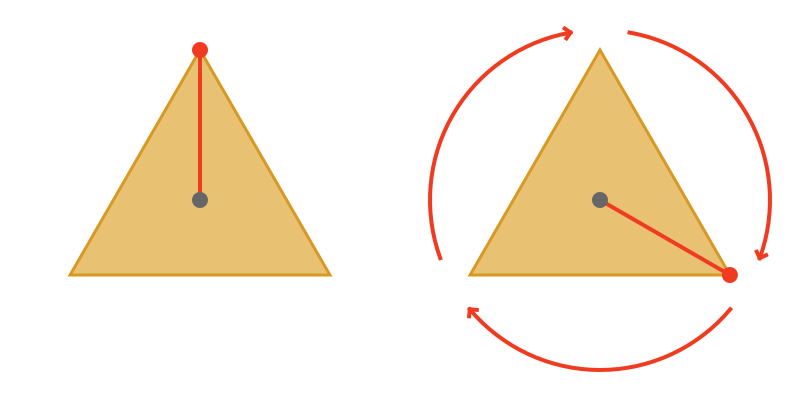
We have marked the triangle on the left with a red dot. The second triangle has been rotated by 120° (a third of a turn) so it looks the same as the first, but the red dot shows that it has been rotated.
As the arrows indicate, if we rotate the shape like this three times it will be back to its original position.
We say that an equilateral triangle has rotational symmetry or order 3, meaning that there are three different orientations that look the same (each with the red dot in a different place).
An equilateral triangle also has three lines of symmetry, so the number of lines of symmetry equals the order of rotational symmetry. This is true for some shapes, but not all shapes.
Rotational symmetry of other triangles
If we try the same thing with an isosceles triangle, we can see that there is no way to rotate the shape to a different angle that makes it looks the same:
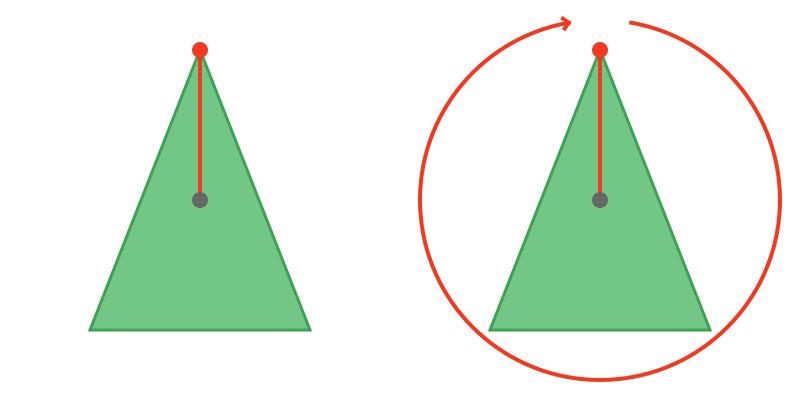
We would have to rotate it by a full 360° to make it look the same. Of course, this just returns it to its original position.
That means that the shape has no rotational symmetry.
This is sometimes described as rotational symmetry or order 1, but that is just another way of saying it has no rotational symmetry. Any shape will look the same if you rotate it through a full turn.
An isosceles triangle has one line of symmetry, but it has no rotational symmetry, so it is an example of a shape that has different line and rotational symmetry.
Scalene triangles don't have rotational symmetry either.
Rotational symmetry of a square
A square can be rotated through one-quarter of a full turn to look exactly the same as the original:
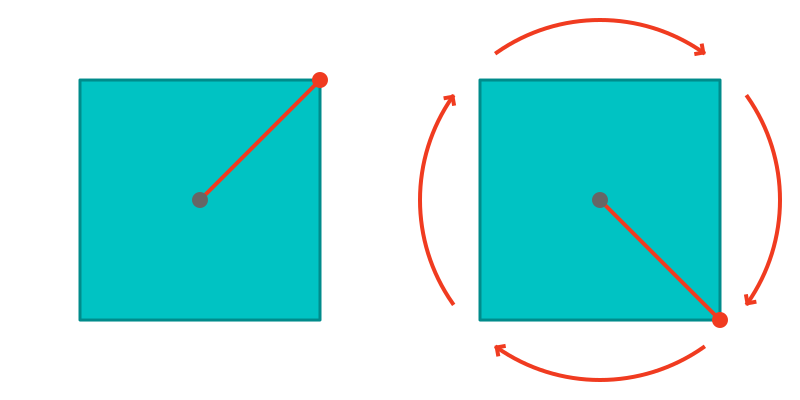
This means that a square has rotational symmetry of order 4.
Rotational symmetry of a rectangle
A rectangle can be rotated through half a full turn to look exactly the same as the original:
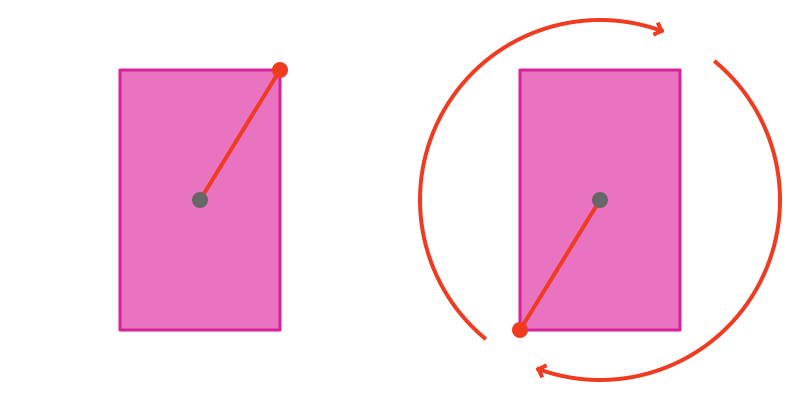
This means that a rectangle has rotational symmetry of order 2.
Rotational symmetry of a trapezium
A trapezium has no rotational symmetry:
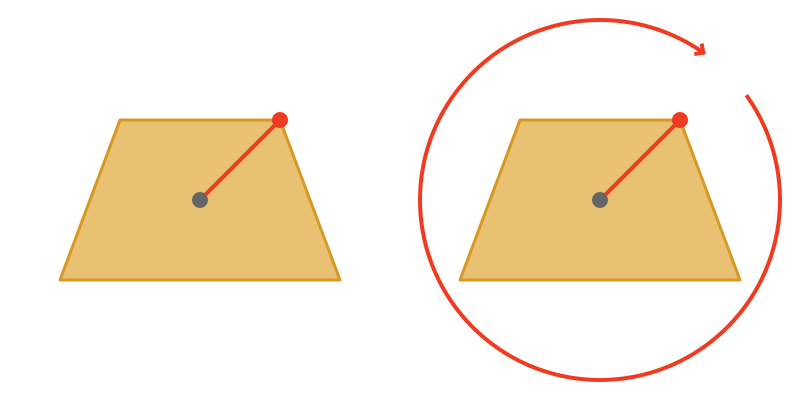
Even if the trapezium is an isosceles trapezium that has line symmetry (as shown in the example) it still has no rotational symmetry.
Rotational symmetry of a parallelogram
A parallelogram can be rotated through half a full turn to look exactly the same as the original:
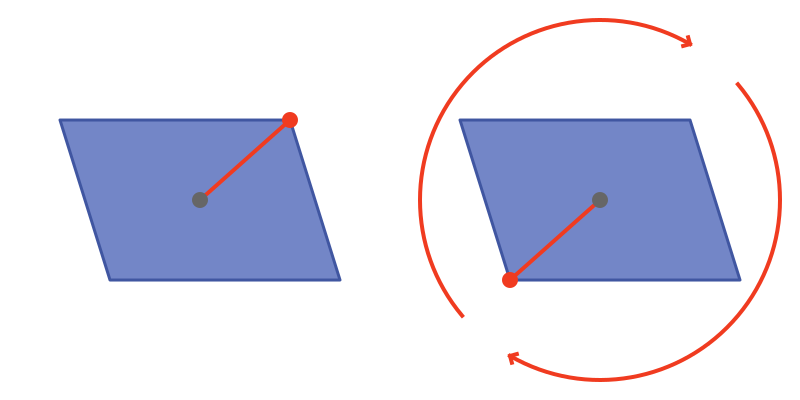
This means that a parallelogram has rotational symmetry of order 2. This is an example of a shape that has rotational symmetry but no lines of symmetry.
A rhombus (a parallelogram with four equal sides) also has rotational symmetry of order 2:
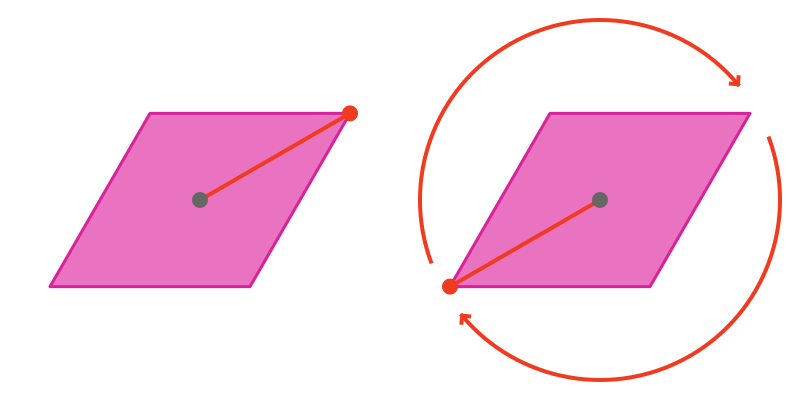
Rotational symmetry of a kite
A kite has no rotational symmetry:
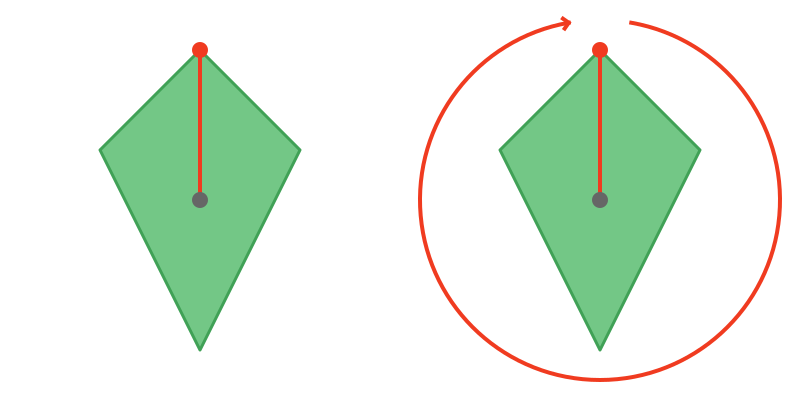
Rotational symmetry of a regular polygon
We have already seen that an equilateral triangle has rotational symmetry of order 3, and a square has rotational symmetry of order 4. These are both regular polygons, of course.
A regular pentagon has rotational symmetry of order 5:
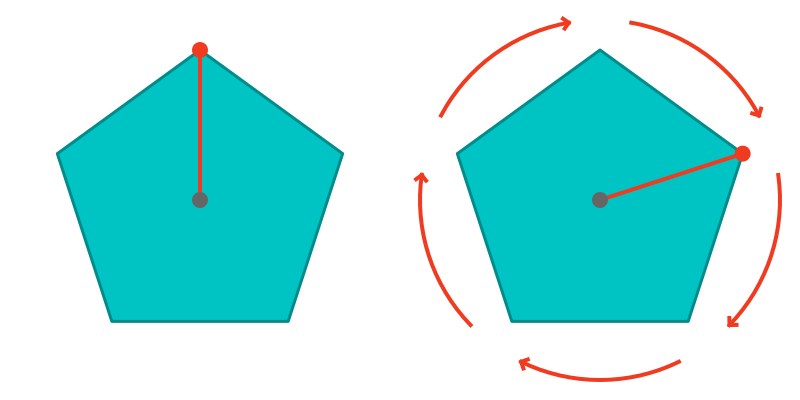
A regular hexagon has rotational symmetry of order 6:
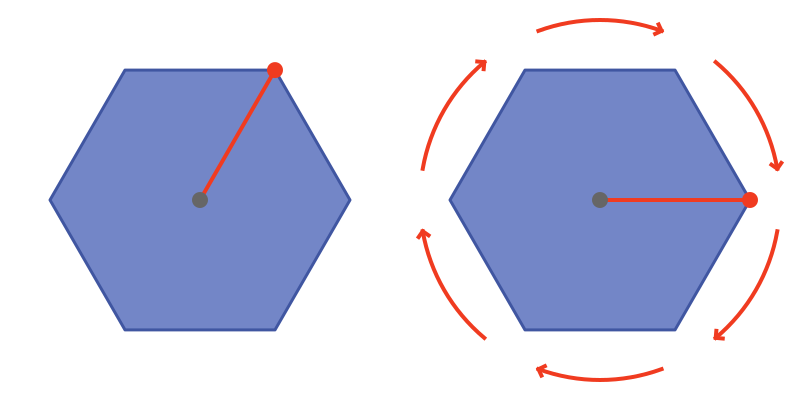
As you might have guessed, any regular polygon has rotational symmetry of order n, where n is the number of sides.
See also

Join the GraphicMaths Newletter
Sign up using this form to receive an email when new content is added:
Popular tags
adder adjacency matrix alu and gate angle answers area argand diagram binary maths cartesian equation chain rule chord circle cofactor combinations complex modulus complex polygon complex power complex root cosh cosine cosine rule countable cpu cube decagon demorgans law derivative determinant diagonal directrix dodecagon eigenvalue eigenvector ellipse equilateral triangle euler eulers formula exercises exponent exponential exterior angle first principles flip-flop focus gabriels horn gradient graph hendecagon heptagon hexagon horizontal hyperbola hyperbolic function hyperbolic functions infinity integration by parts integration by substitution interior angle inverse hyperbolic function inverse matrix irrational irregular polygon isosceles trapezium isosceles triangle kite koch curve l system line integral locus maclaurin series major axis matrix matrix algebra mean minor axis n choose r nand gate newton raphson method nonagon nor gate normal normal distribution not gate octagon or gate parabola parallelogram parametric equation pentagon perimeter permutations polar coordinates polynomial power probability probability distribution product rule proof pythagoras proof quadrilateral questions radians radius rectangle regular polygon rhombus root sech segment set set-reset flip-flop sine sine rule sinh sloping lines solving equations solving triangles square square root standard curves standard deviation star polygon statistics straight line graphs surface of revolution symmetry tangent tanh transformation transformations trapezium triangle turtle graphics uncountable variance vertical volume volume of revolution xnor gate xor gate